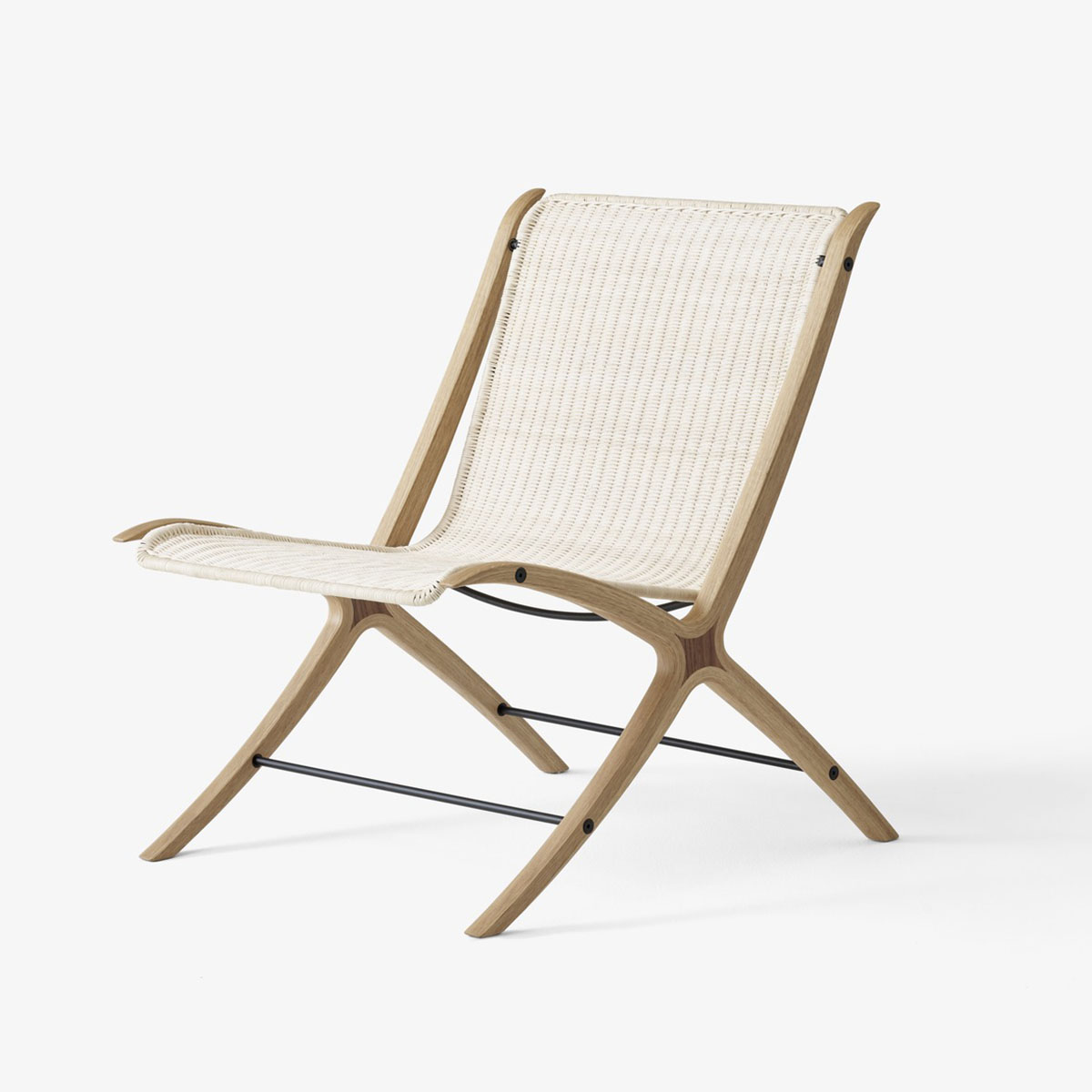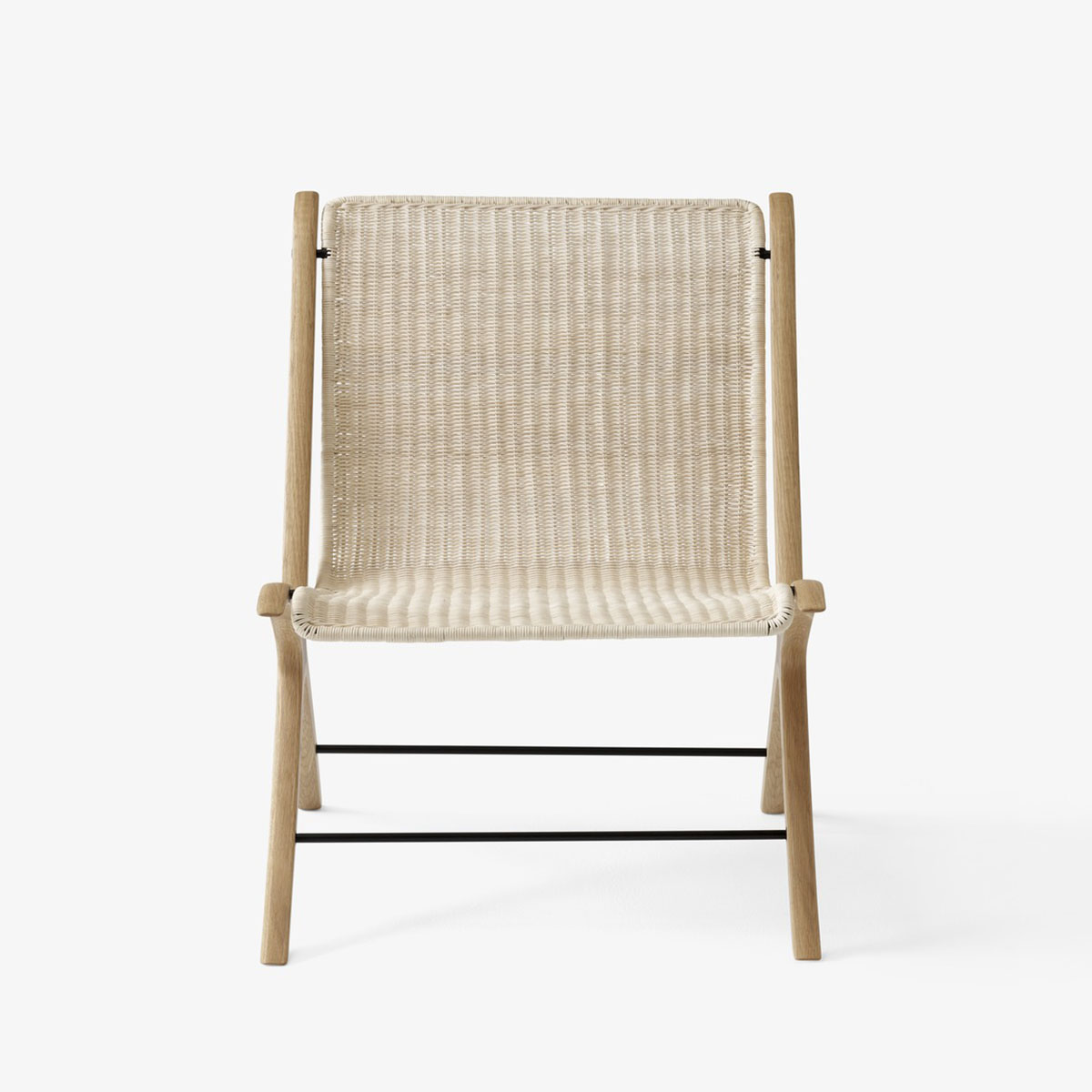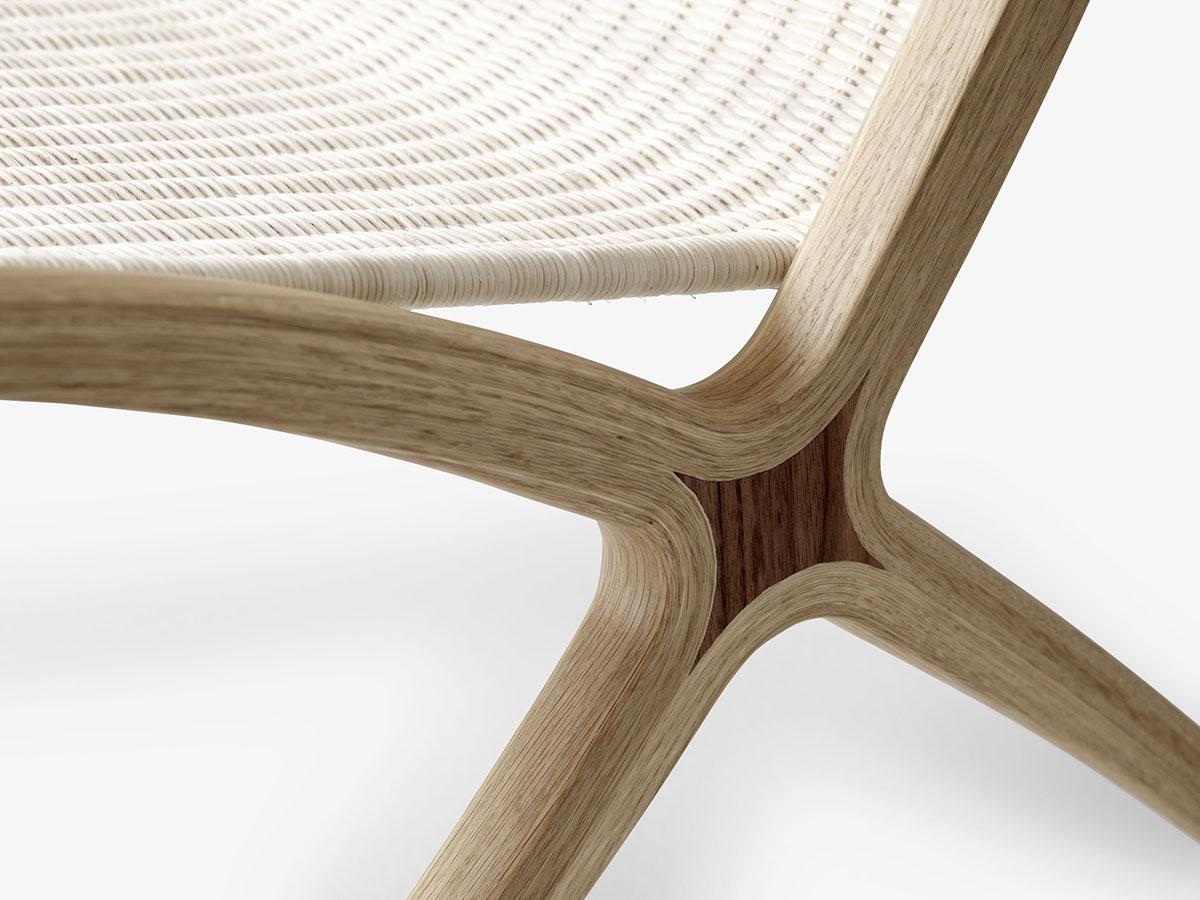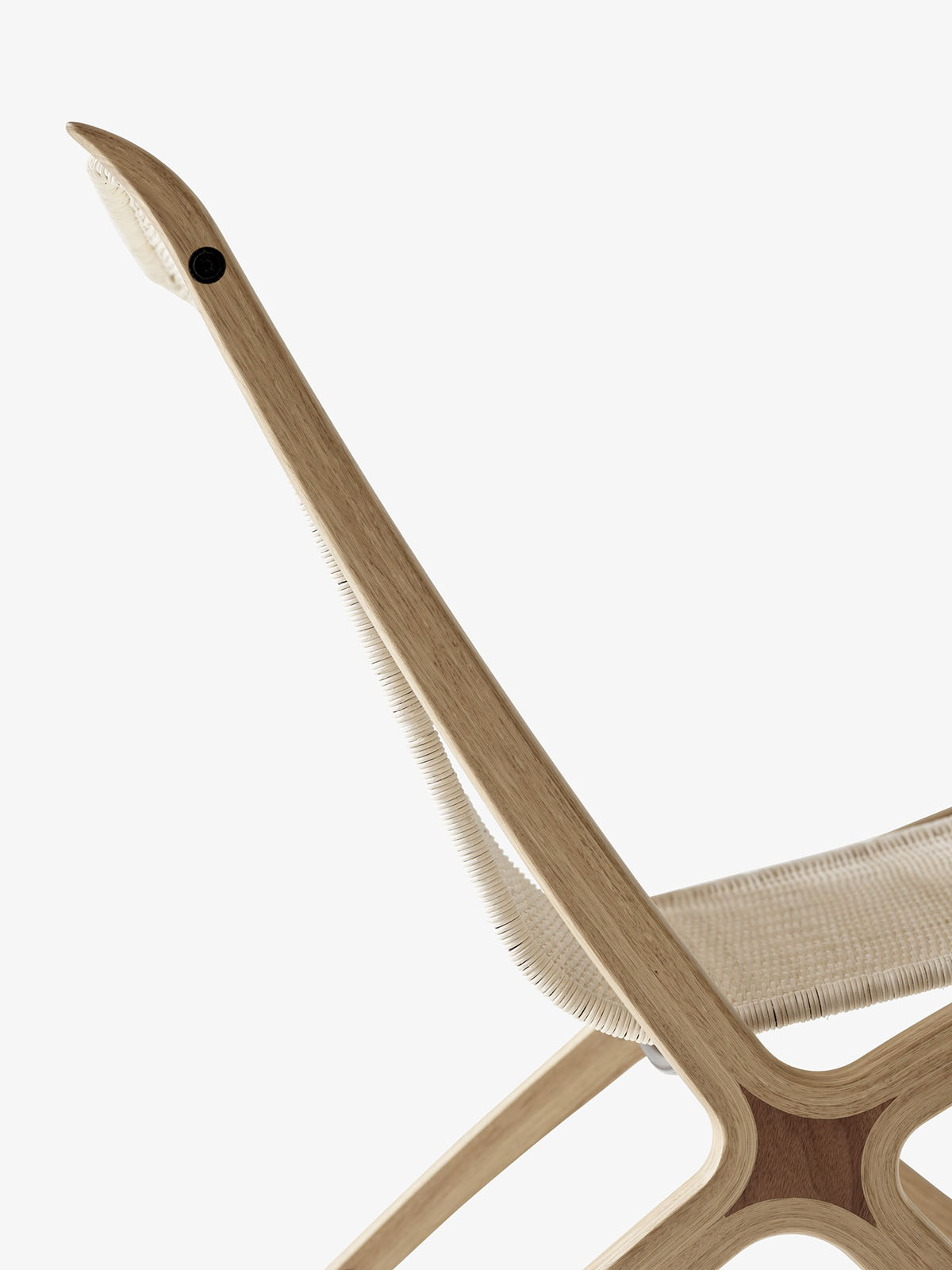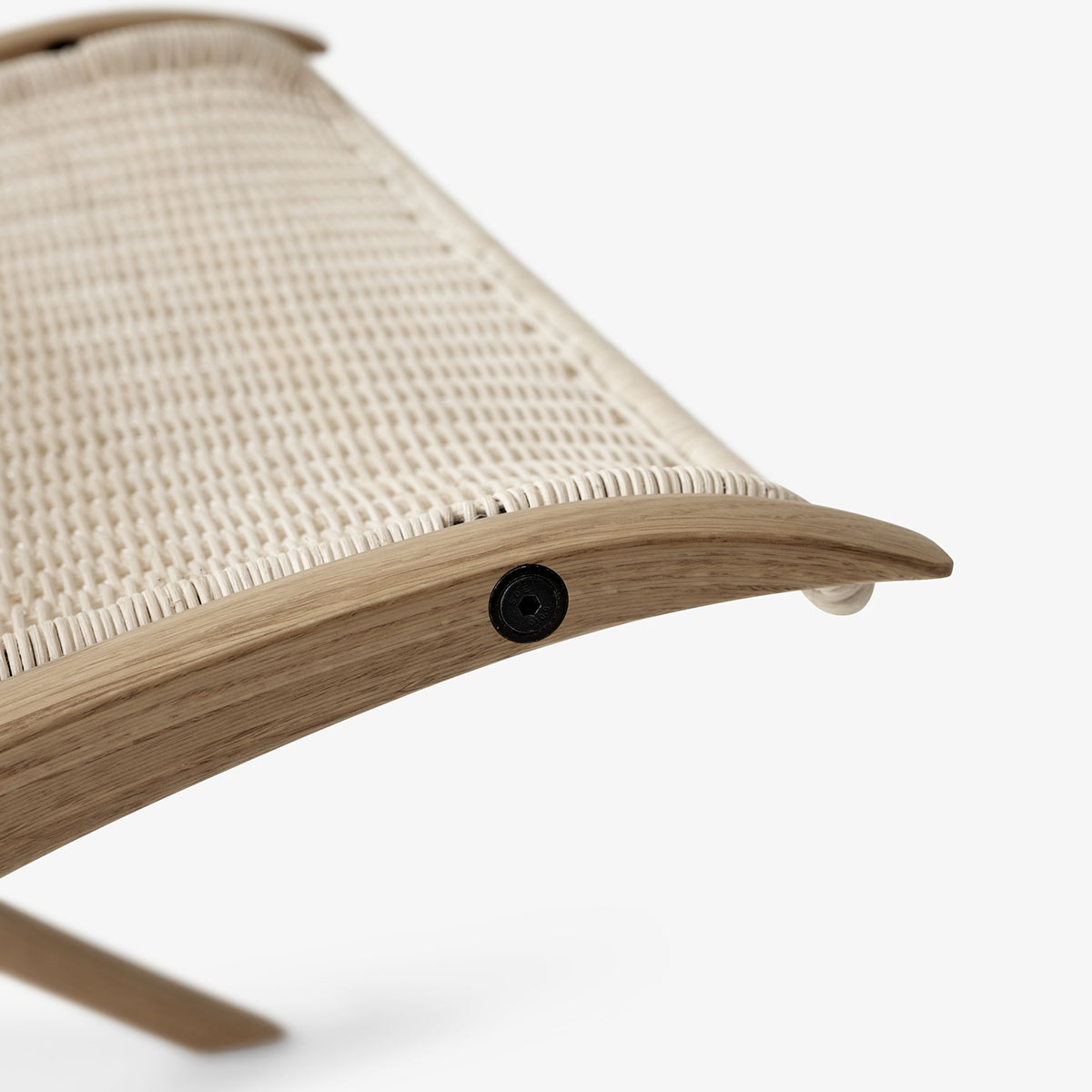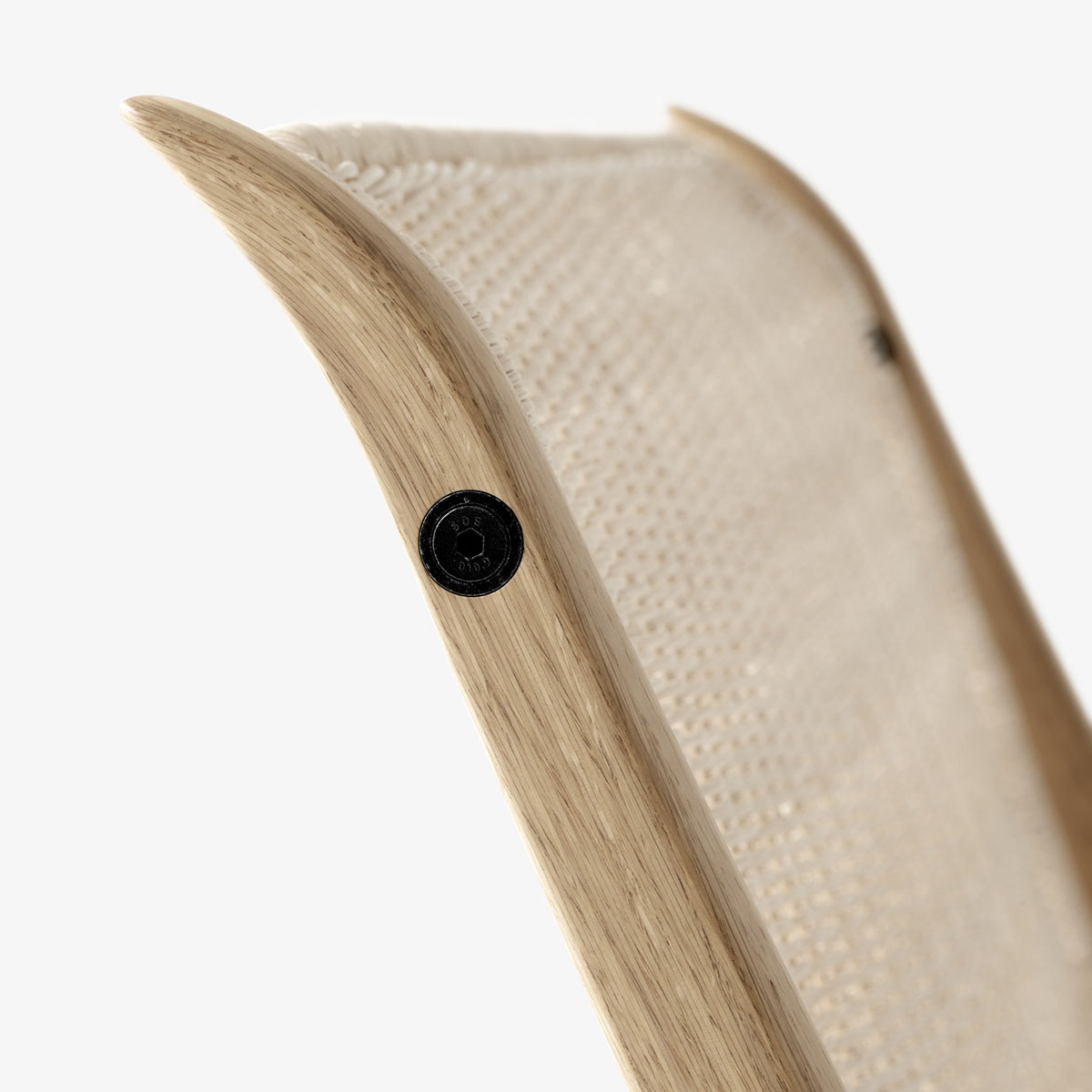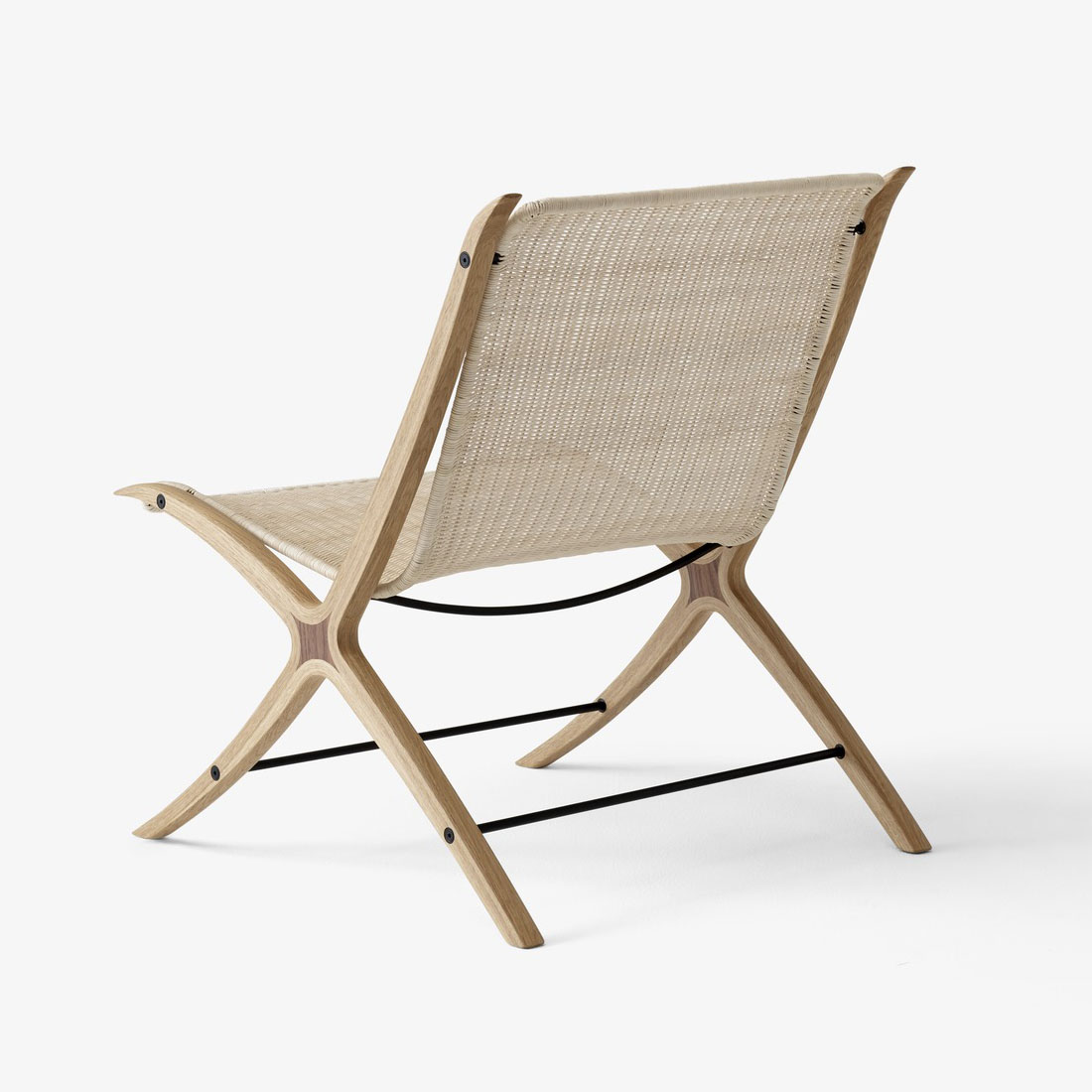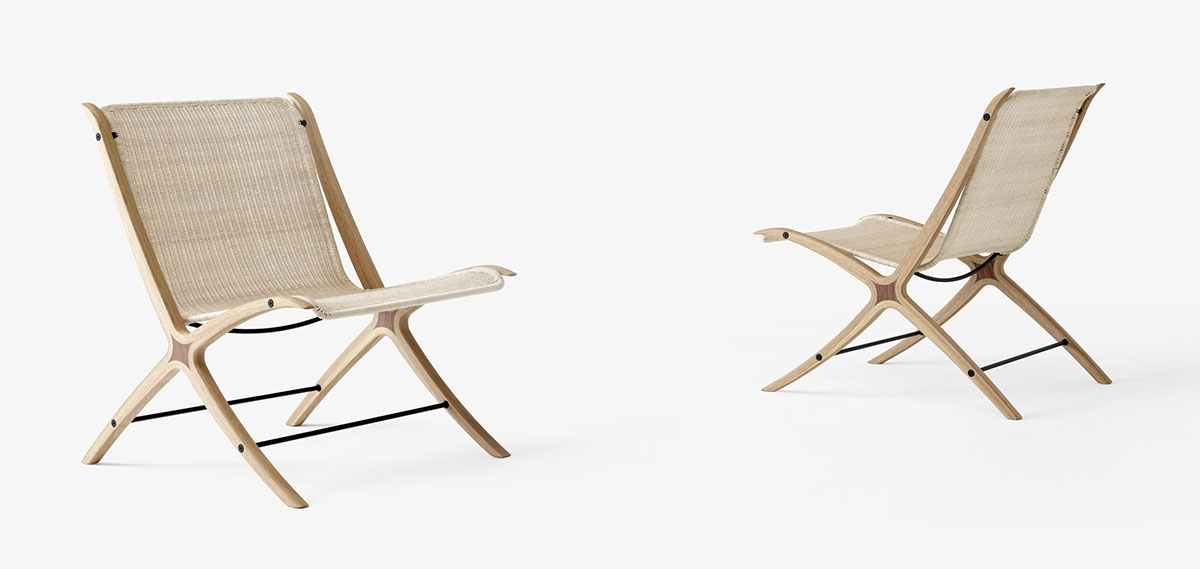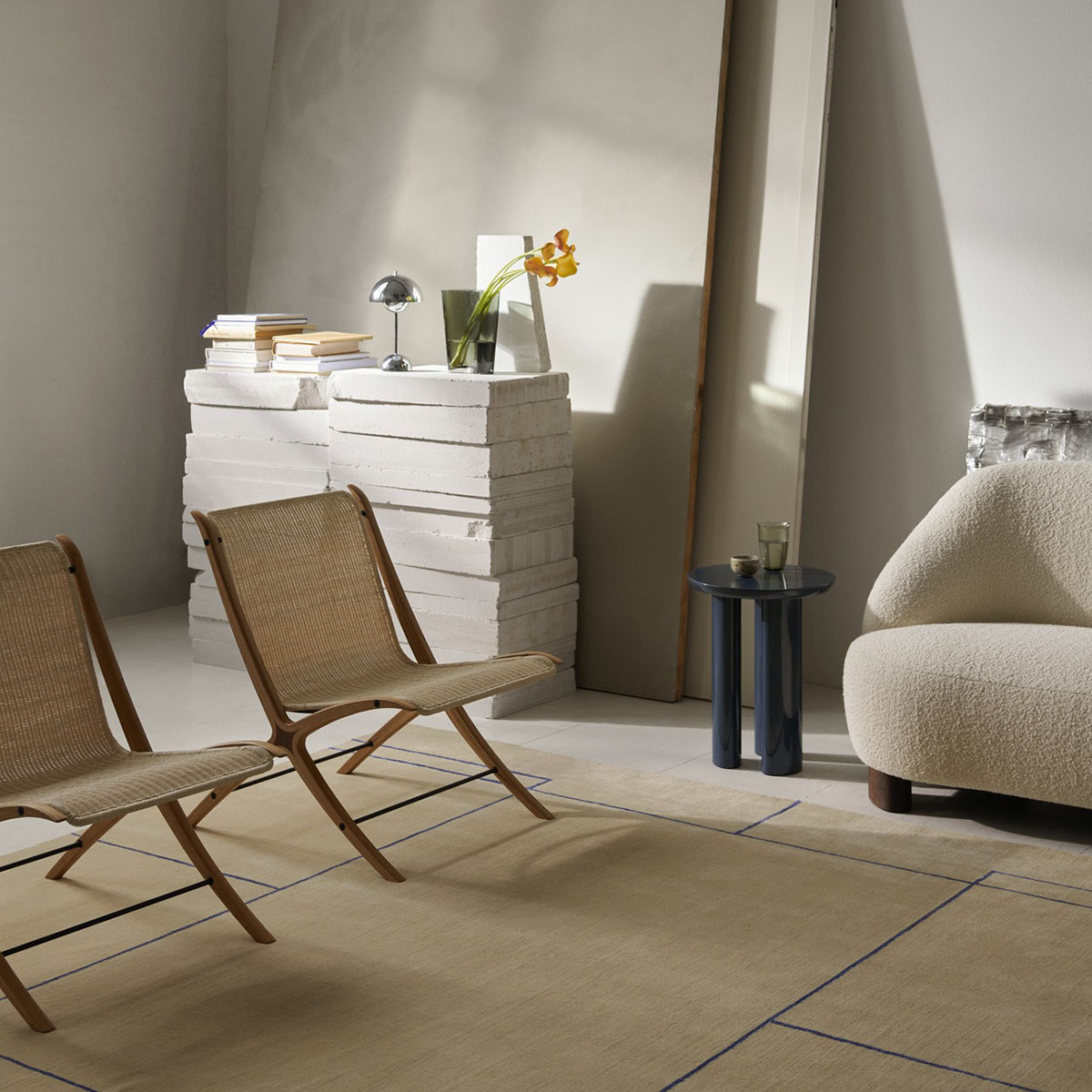Showcasing an intriguing relationship between material and concept, the X lounge chair represents Hvidt & Mølgaard’s peak as furniture designers.
After experimenting for years with the concept of a laminated wooden frame inspired by old wooden tennis rackets, Danish design duo Hvidt & Mølgaard released X in 1959, a lounge chair with a distinctive sloping silhouette and understated aesthetic.
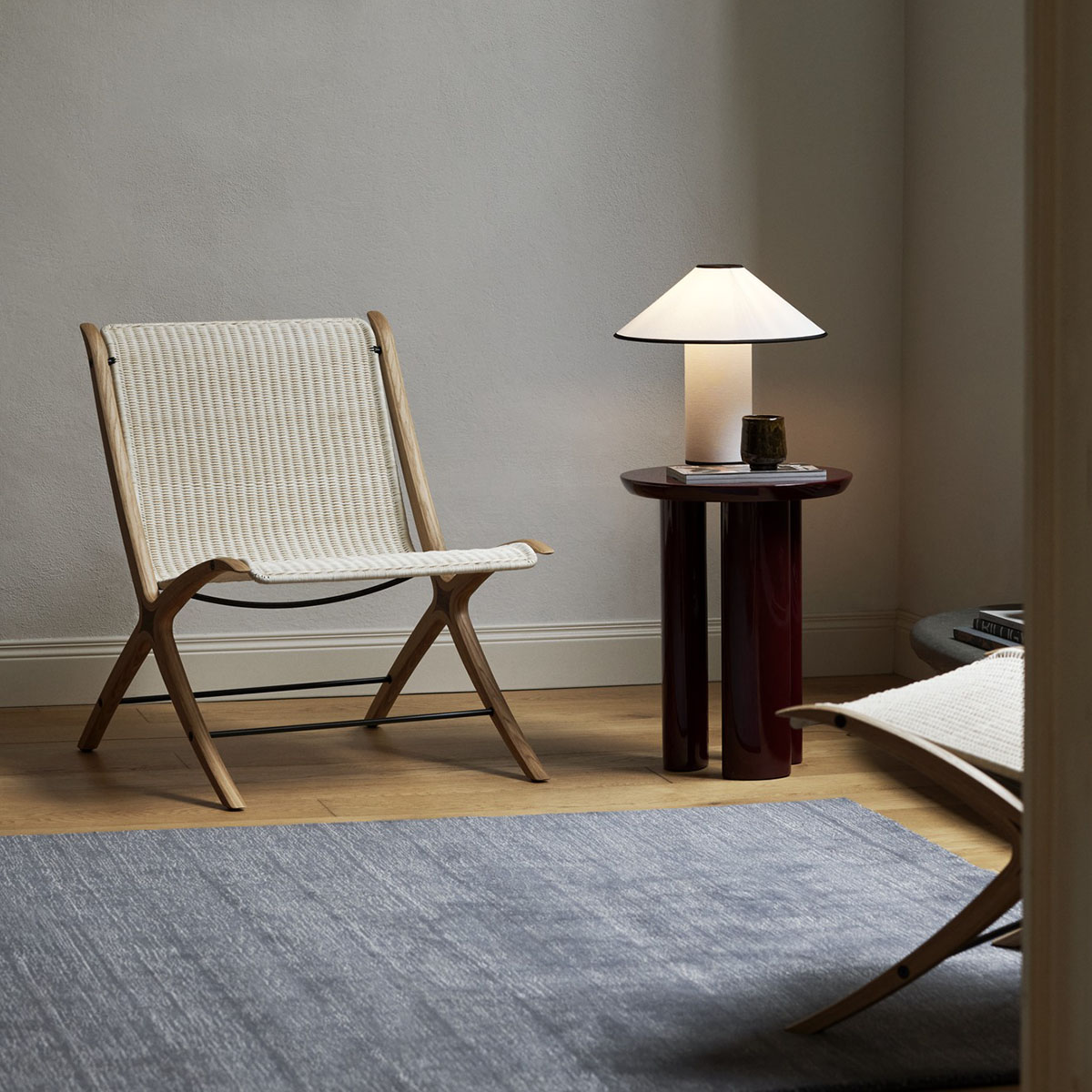
A supremely stylish piece that solidified their reputation as pioneers in the world of Danish design, X reflects the unorthodox way in which Hvidt and Mølgaard approached principles of construction.
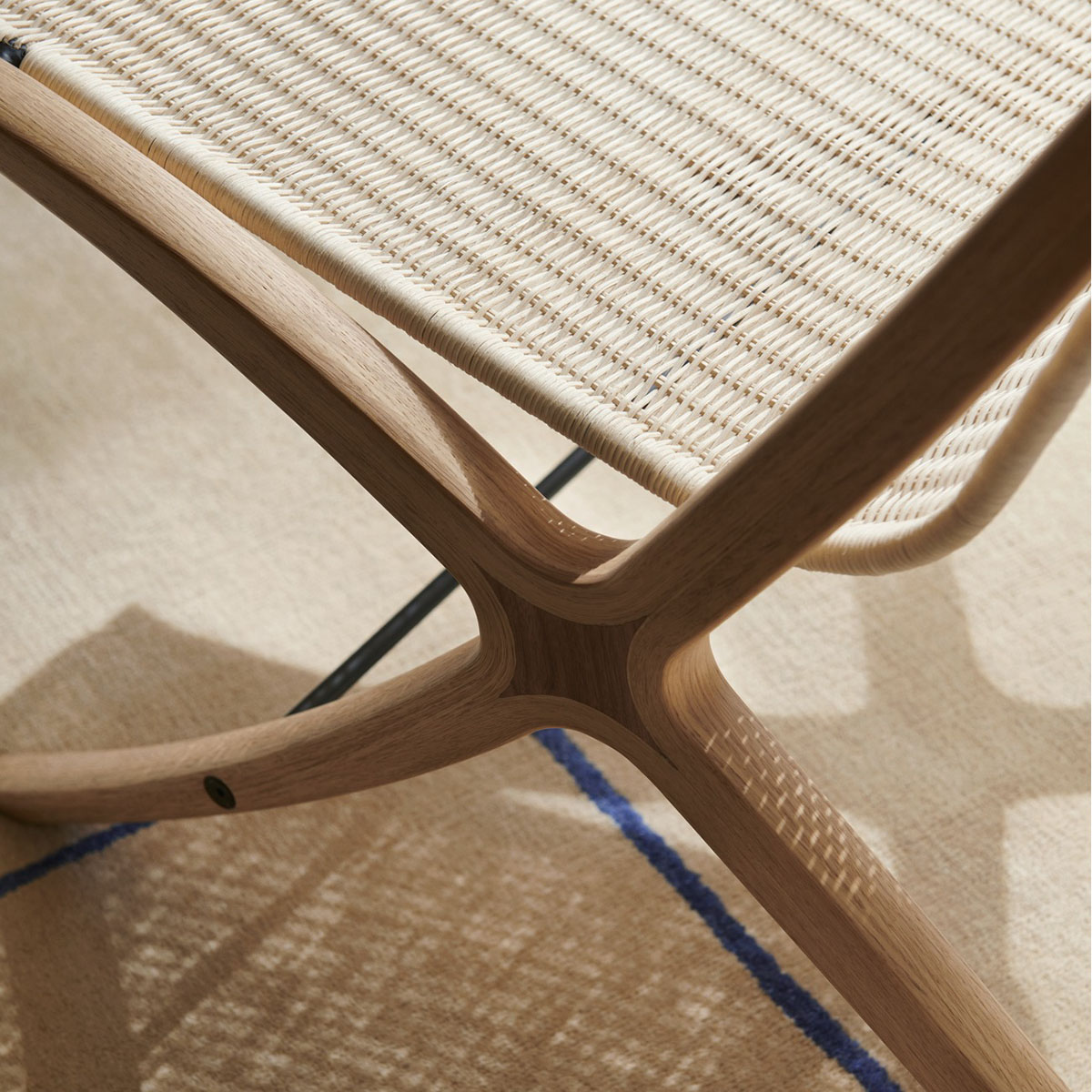
Archival sketches show how the designers thoroughly examined and tested materials to eventually settle upon a woven natural rattan seat supported by a graceful frame in oiled oak. Highlighting their affinity for honest, natural materials, the connecting x-shaped leg joint is defined by the introduction of an expertly crafted, contrasting solid walnut insert.
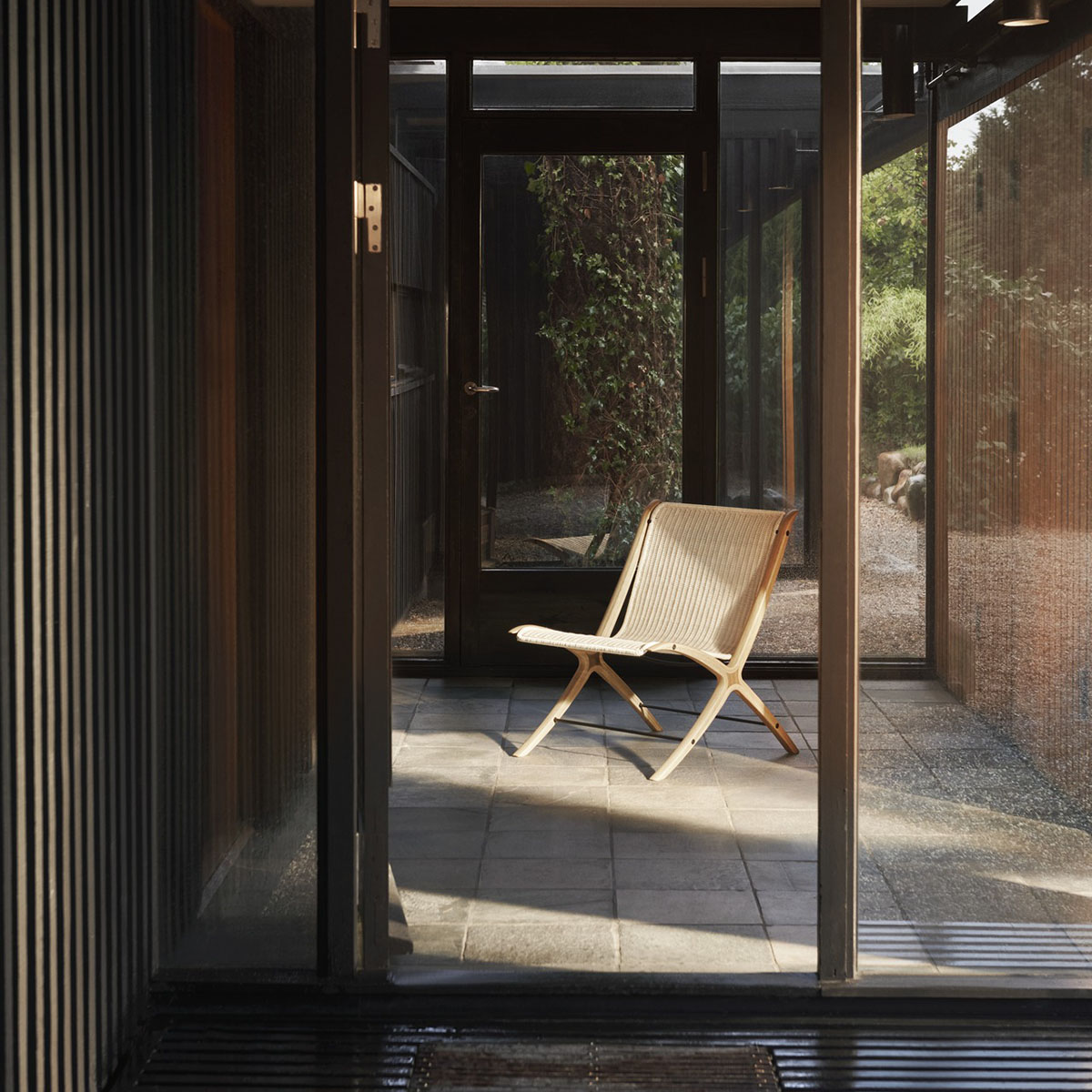
While its streamlined form and utilisation of quality materials reflect the traditional values of Danish design, it was created as a buildable piece that could be easily shipped beyond the borders of their small country. As some of the earliest advocates for self-assembly furniture, Hvidt and Mølgaard paved the way for future generations of Scandinavian designers to access a global audience with the same innovative ideas.
“Although Hvidt and Mølgaard seemed like modest Danish men, they possessed an inspiringly international outlook,” explains &Tradition founder and CEO Martin Kornbek Hansen. “Elegant and unusual, X instantly stood out to us as we were flicking through old archives. A real archetypal example of their visionary approach to design, we knew instantly that we wanted to bring it back into the spotlight.”
